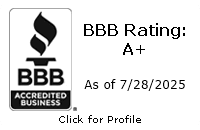How to Optimize Google Ads for Moving Companies – 8 Expert Tips
When working on Google Ads, you may have seen an “Optimization Score” that Google provides. This is enticing, as you want your ads to run as efficiently and effectively as possible. This optimization score can be useful, as it points to recommendations from Google to help your ad, which, as you “fix” or “dismiss” those recommendations, will raise your optimization score up to 100%.
However, it doesn’t give you a true level of optimization. In fact, no algorithm will. The only way to be confident that your ad is set up for success is by properly managing and amending your ad.
This can be difficult, as you may be unsure of what to look for. As a digital advertising agency that has been working with Google Ads for moving companies for over a decade, we have a knowledge of how to use Google Ads that we want to share with you. That’s why we put together this in-depth guide full of tips to help optimize Google Ads for your moving company.
1. Choose the Perfect Location
Deciding on a good location is key to any successful marketing campaign. It may be the case that your moving company is near a big city or maybe the city you’re in is part of a larger area. This can make it tempting to choose the largest audience possible by targeting the big city or the entirety of the large area you’re a part of.
Sometimes this is the best choice while other times it’s just biting off more than you can chew. You will have to decide before setting up any marketing campaign, including Google Ads, where you can best compete to maximize traffic. The more specific the targeting the more specific the efficiency will be.
2. Choosing the Right Bid Strategy
Google’s goal in developing different bid strategies was to have them be able to be tailored to your goals. There are 5 bid strategies and they match with the goals of your campaign as such:
- Smart Bidding: This bid strategy uses machine learning to optimize your ad for efficient conversions. If you’re trying to get quotes for your moving company, this is the one to use.
- Cost-Per-Click: Best for when your goal is to get people to come to your site.
- Cost-Per-Thousand Impressions: For brand awareness, you may want your goal to be to simply get your ad shown as many times as possible.
- Cost-Per-Thousand Viewable Impressions: This is a more specific type of Cost-Per-Thousand Impressions that guarantees that your ad will be fully rendered on someone’s screen. That makes it perfect for getting interactions with your ad.
- Cost-Per-View: This is meant for videos specifically. You will be able to see how many people watched your video.
Everyone’s goals are different for the direction that they want their advertising to go, which is why it’s important to reflect on this when deciding what your bid strategy will be.
3. Keep an Eye on Search Terms
You will want to keep as close of an eye as possible on Search Terms in Google Ads.
What is a Search Term?
Search Terms are the keywords that people have looked up in Google that your ad appeared for. These are not the keywords that you have entered into Google Ads, but do derive from that list.
How does monitoring Search Terms help?
The thing is, Search Terms are not a perfect system. Whenever someone searches for something, Google looks at the keywords you entered and sees if any are a close match. Such as your ad appearing under the Search Term “large house moving” when the keyword that you entered is simply “house moving”.
This is a useful way of hitting more keywords, but sometimes the keywords that they connect together aren’t the best match.
By going through your Search Terms, you can mark off any Search Terms that are nonapplicable to what you’re looking for as negative and your ad won’t appear for them again.
4. Utilize Remarketing
Using a remarketing strategy may be the best option for what you need. This allows you to get your ad in front of people who have viewed your website in the past. That means everyone who will be shown your ad has some level of interest in your company.
This requires a completely different setup for your Google Ads. The schedule, location, and keywords completely change. You need to set it up so that you can catch anyone who has been on your site, no matter the time, location, or what they’re searching.
5. Test with Smaller Budgets First
Google Ads can be fairly guess-and-check. It requires constant monitoring to make changes and improve the efficiency of your ad.
A great way to do this is by testing out your ad with multiple targets and settings using smaller budgets and see which performs the best.
When doing this, be sure to isolate the differences between two different ad groups or campaigns so you know what is making the difference. If one ad group is performing better than another, but there are 5 differences between them, you won’t know for sure which of these differences is causing the better performance.
6. Responsive Search Ads Mean Perfect Headlines and Descriptions
Responsive Search Ads are the best way to ensure that the content of your Google Ad, the headline and description, is set up to be as effective as possible.
To use this, you will enter multiple headlines and multiple descriptions. Over time, Google will mix-and-match these headlines and descriptions and take data on how each one performs, which allows you to see which causes the ad to perform the best.
Be sure to keep an eye on this and replace any that are not performing well.
7. Use Both Short-Tail and Long-Tail Keywords
It can be tempting to look at a big keyword such as movers or moving companies and put all your money targeting these, but there is a big drawback: Everyone wants these keywords.
Now, that doesn’t mean just ignore short-tail keywords that have high traffic. When building your list of relevant keywords, these should be included. However, it doesn’t stop there. Long-tail keywords, which are more specific, have less volume, but also less competition, meaning cheaper bids and a potentially higher click-through rate.
Think about what types of services you offer and what types of services you would like to get leads for as you consider your keywords. Be sure to hit everything!
8. Consider a Digital Advertising Agency
As you can see, Google Ads take a lot of work to set up and plenty of time and expertise to properly manage. That’s why it may be the right call to use an ad agency specializing in moving companies that you can trust to handle your Google Ads.
When searching for a digital advertising agency, be sure to look for one that is:
- Focused on your industry.
- Experienced with Google Ads.
- Dedicated to providing great customer service.
At the end of the day, you have a moving company to run. By trusting a digital ad agency to handle your Google Ads, you can let the leads come to you while you focus on providing your customers great moves.




